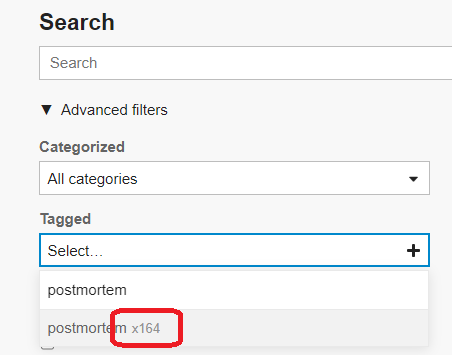The postmortem, or retrospective, is by now a well embedded tradition in the interactive fiction community (and to some extent, in video game development more broadly). The author comes to the end of a project, reflects back on what they intended to do, the challenges of the design and implementation, and considers how their work has been received. Did you achieve your vision? Did anyone like what you were trying to do?
This form of article is invaluable for developing craft knowledge. Craft knowledge is the knowledge that we as practitioners, as designers, gain in the process of creating. It’s a knowing how to do something, of course. But it’s also a knowing what is possible with the tools at our disposal, and what effects our choices might make, and what problems we’re likely to come into by choosing one form of implementation over another. Interactive fiction authors develop this knowledge implicitly through their craft, but engaging in a period of reflection after a game is released allows some of that knowledge to be explicitly formulated.

I contend that this postmortemising is often a form of qualitative research. Academics frequently write papers and theses where they look at some social practise and try to abstract from it some general insights. On a very practical level, this is often what the IF authors are doing when they look back on their work. They’re synthesising some lessons from their experience of the whole process of creating and sharing their work. The ability to take criticism, reflect and reiterate is a hallmark of a writer who is able to build upon they’ve done and improve for next time. Often this is what’s going on with the postmortems. The postmortem isn’t just a way for authors to learn from their own work, but reading other people’s experiences can help shine light on your own work practises— showing hitherto unseen possibilities, signposting pitfalls, or seeing commonalities between what worked or didn’t work for someone else.
Not always though! It won’t take long looking through the postmortems on the IntFic forum to find some that are relatively perfunctory. You’ll see recurring themes such as “here is my response to things people complained about” or “nobody spotted this thing I did that I thought was neat”. While it might be laudable to insist that our work be the final word, when offered the chance, most writers are happy to add a few more words of clarification. Still, even the very brief retrospectives aren’t just self-indulgence. A large part of the pleasure of the community for creators is the breadth of critical engagement from players, but also the chance to take part in the conversation from your own experience. Talking about your own work isn’t an indulgence when it’s forming part of a collective sharing.
With all this in mind, I’ll be reflecting soon on my own recent release Lies Under Ice. I think the game does a lot of really interesting things for an interactive novel. It combines a base-building element with a lot of hard-forking choices that have big impacts that ripple throughout the whole story. It my second Choice of Game game, and ended up twice the size of Trials of the Thief-Taker. Thief-Taker came in about 100k of words and script, while Lies Under Ice is over 200k, and has a novella-length average play size of about 50k words. Alongside writing this big sci-fi game though, I’ve been finishing up working on my PhD. I’m in the write-up, and reflecting upon Lies Under Ice forms a part of the work. Eventually when it’s all dusted and (with any luck) cannibalised for journals, I’ll share parts here on the blog.
Until then, please share with me the most insightful postmortems you’ve read… or written?

I feel like I read someone (Robin Johnson maybe?) saying he didn’t like “post-mortem” as a phrase because it sounded like the game was dead, so he used “retrospective” or similar instead. I always think of it fondly when this comes up. I think a lot of the time they’re really valuable, and give insights into game design that you don’t often get directly from studio games, even indie ones, because retrospectives from studios tend to be much more about marketing/are more cautious/don’t want to examine missteps or possible improvements in public.
Back in the day, the We Know the Devil postmortem was a big inspiration to me – not necessarily because I wanted to make visual novels, but after having made a few short-story length IFs, it helped me better understand how to make a longer-form one and think about branched stories in more detail. I also enjoyed Sam Kabo Ashwell’s post about Scents and Semiosis because it’s such a personal project and it was lovely to see how those personal elements came together to make something that others could enjoy as well as the intended audience of one. I’m sure you’ve probably seen it before, but Mathbrush’s postmortem of his CoG game In the Service of Mrs. Claus was really good and insightful.
I look forward to reading your thoughts on Lies Under Ice (I enjoyed playing it a lot), and best of luck with the final stretch of the PhD!
LikeLiked by 2 people
Yes, I agree entirely with that— a game is often still very much alive even when we dissect it! Thanks for sharing those links, I hadn’t seen the We Know The Devil postmortem, it’s way more granular and helpful about structure than these things often get.
Mathbrush has some excellent insights, I really liked going through all his reviews, he’s great at drawing out the elements that work or don’t work in CoGs.
LikeLiked by 1 person